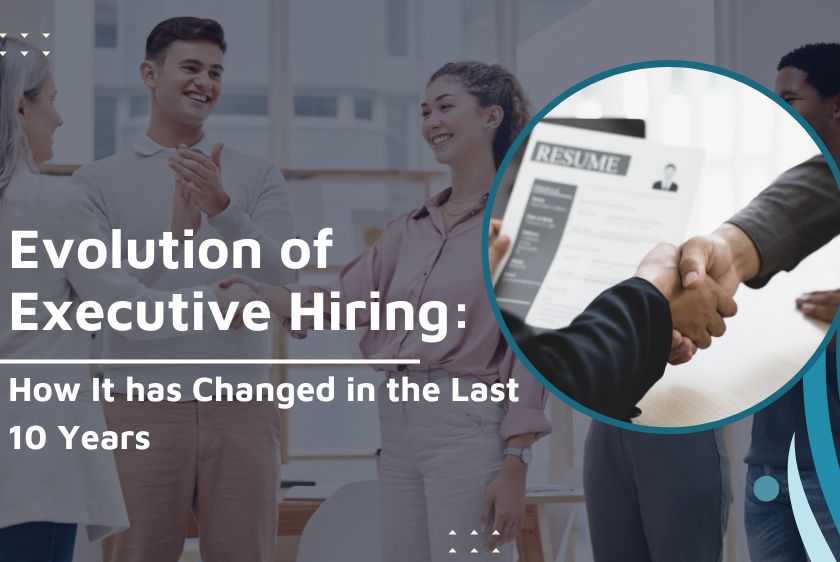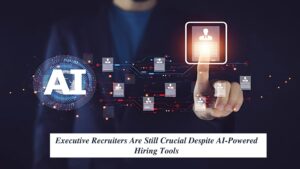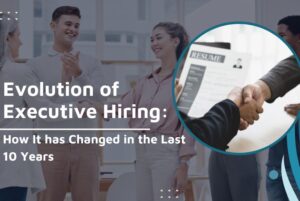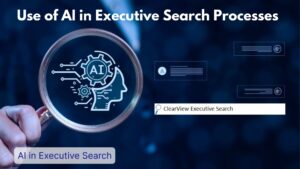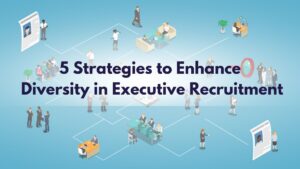Executive hiring has changed a lot in the last ten years due to the complex global markets, digital transformation, and leadership expectations. In the past, companies relied on personal networks, industry referrals, and online job boards. These methods are still helpful. They now use data-driven tools and artificial intelligence. There are also new ways to evaluate leaders. Organizations look for experienced, adaptable, innovative executives who fit well with the company culture. In this blog, we will discuss the significant changes that have reshaped executive hiring over the last decade and what companies want in leaders today.
1. Data-Driven Hiring Over Personal Networks
A decade ago, executive hiring was largely based on industry connections and word-of-mouth recommendations. If a company needed a new CEO or CFO, board members and investors would often suggest someone they knew or had worked with before. While networking still plays a role, businesses now rely on technology to make better hiring decisions.
AI-powered hiring platforms and predictive analytics have become essential tools in executive recruitment. Companies use these technologies to scan thousands of candidates, analyze leadership traits, and assess performance history. This shift has made hiring more objective, reducing bias and ensuring the best candidate is selected based on skills and potential rather than personal connections.
2. Skills and Leadership Style Matter More Than Experience
In the past, executive hiring focused primarily on candidates with long careers in the industry. Seniority and years of experience were key deciding factors. However, as industries rapidly evolve, companies now prioritize skills over tenure.
Why the Shift?
Markets change quickly, and companies need leaders who can think fast and drive transformation. Hiring managers now ask:
- Can this person lead during uncertainty?
- Do they embrace technology and innovation?
- How well can they manage diverse teams across different regions?
For example, when Microsoft appointed Satya Nadella as CEO in 2014, he was not the most senior executive at the company. However, his vision for cloud computing and digital transformation made him the right choice. Today, Microsoft is a leader in cloud technology because of that decision.
Interim and Project-Based Leadership Is on the Rise
Businesses are increasingly hiring executives on a temporary or project basis rather than committing to long-term leadership contracts. This approach allows companies to bring in specialized expertise when needed, whether for crisis management, digital transformation, or restructuring.
Tech startups often hire interim CFOs to guide them through funding rounds without committing to a permanent position. Similarly, large enterprises bring in transformation specialists for short-term executive roles to drive specific projects. This flexible hiring model gives businesses the ability to adapt quickly while still accessing top leadership talent.
Diversity in Leadership Is a Key Priority
Companies now understand that diverse leadership teams drive better innovation, decision-making, and business performance. Businesses that once overlooked diversity are now making it a core part of their hiring strategy. Instead of hiring leaders from the same backgrounds, companies are actively bringing in executives with different experiences, perspectives, and cultural insights.
Coca-Cola has made considerable progress in this area by setting clear diversity goals for its executive team. The company has introduced structured hiring policies to ensure equal opportunities and representation at the leadership level. This approach has strengthened its global brand and helped it better connect with diverse markets.
Executives Are More Selective About Where They Work
Top executives today evaluate a company as much as the company evaluates them. Compensation alone is no longer the biggest factor in accepting a leadership role. Executives want to work for organizations that align with their values, offer strong leadership support, and provide a clear vision for the future.
Apple has successfully positioned itself as an employer of choice for mission-driven executives. Its focus on sustainability, innovation, and ethical business practices has made it a highly attractive workplace for top leaders. This shift highlights how businesses must now offer more than just financial incentives to attract top leadership talent.
Final Thoughts!
Executive hiring has changed a lot in the past decade. Companies no longer hire just based on experience. They look for leaders who can think fast, adapt to change, and drive growth. Businesses that use data-driven hiring strategies attract the best talent. If you need the right executive for your business, Clearview Executive Search can help. We connect companies with top leaders who bring real value and long-term success. Contact us today to find the right leader for your organization.
Read another blogs:
What Are the Red Flags to Avoid When Hiring a CFO?
5 Challenges Companies Face When Hiring Executives Without Professional Help
